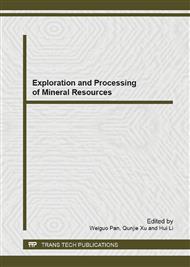p.30
p.34
p.38
p.42
p.46
p.51
p.56
p.62
p.66
The Research on the Depositional Systems Types and Characteristics of Sublacustrine Fan Deposits in the Second Member of Dongying Formation, Liaodong Bay
Abstract:
Integrated employment of wireline logging and seismic data, turbidite fan types and distribution characteristics were analyzed in the Paleogene strata of the second Member of Dongying Formaiton. The results showed that: the study area developed many types of turbidite fan, including the slump turbidite fans, deepwater turbidite fan, steep nearshore turbidite fan, far shore slope turbidite fan, etc. There are significant differences in the developmental environment, sedimentary characteristics, the main factors and so on. The differences in delta size, provenance, ancient terrain and triggering mechanism affect the development of different turbidite fan deposits. By identifying wireline logs stacking patterns, the external geometry and internal reflection structure of seismic events, the types of lacustrine fan identification modes were determined. And also with three-dimensional seismic attribute analysis techniques for predicting sublacustrine fan and determining the plane distribution, it provide basic geological evidence for lacustrine fan hydrocarbon reservoir exploration.
Info:
Periodical:
Pages:
46-50
Citation:
Online since:
December 2013
Authors:
Price:
Сopyright:
© 2014 Trans Tech Publications Ltd. All Rights Reserved
Share:
Citation:


